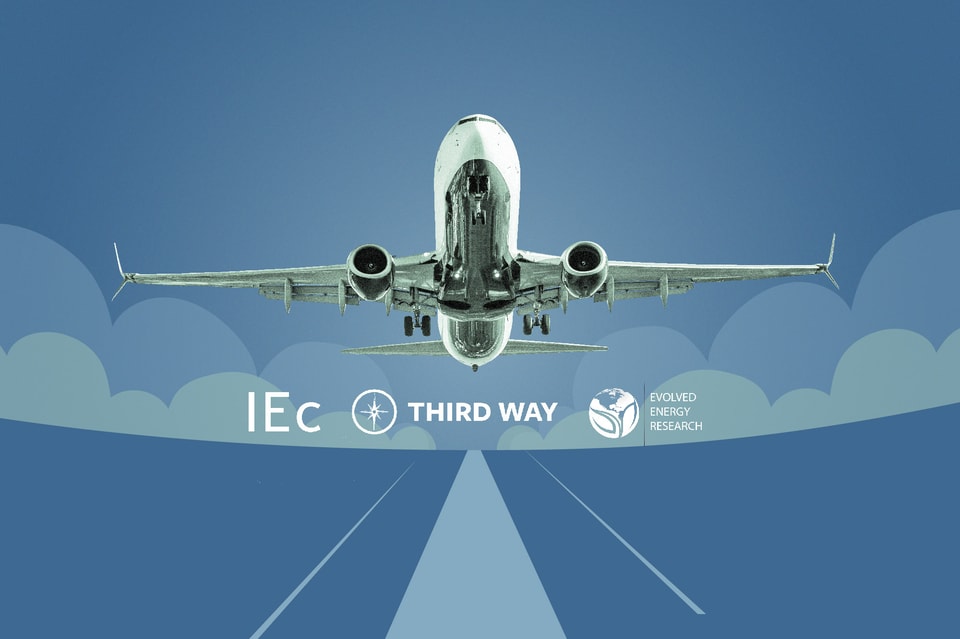Report Published April 5, 2024 · 2 minute read
Soaring to New Heights: The Economic Impacts of Building an American SAF Industry
John Hebert, Alexander Laska, Jason Price, Derek Ehrnschwender, Ben Haley, Gabe Kwok, & Jamil Farbes

Aviation is one of the most difficult to decarbonize sectors of the economy. Sustainable aviation fuels (SAF), a low carbon alternative to fossil-based jet fuel, offer the most promising solution to reduce aviation emissions over the coming decades.
Many major airlines have publicly committed to reach net-zero emissions by 2050, a goal that relies on our ability to rapidly scale the emerging SAF industry by increasing production and reducing the comparably higher cost of these fuels.
Replacing all conventional jet fuel with SAF by mid-century is an ambitious task—one that has the potential to create thousands of American jobs and transform rural communities across the United States while simultaneously decarbonizing air transportation.
To help quantify these potential impacts, Third Way commissioned Evolved Energy Research and Industrial Economics to assess the economic and employment impacts of building a domestic SAF industry. Our analysis examines the states that are best positioned to lead the country in producing SAF, the potential for job growth as a result of this industry over the next 25 years, and the GDP impacts of investments in this emerging industry.
We find that fully replacing conventional jet fuel with SAF by 2050 could result in:
- Nearly $800 billion in capital expenditures to construct SAF production facilities and upstream infrastructure and over $650 billion in ongoing operations and maintenance expenditures to sustain these facilities. This includes investments in supporting sectors such as wind, solar, hydrogen, and agriculture.
- Significant economic opportunities in the Midwestern and Great Plains regions of the US, with several states such as Texas, Oklahoma, and Nebraska having the potential to see over $100 billion in investments related to SAF production over the next 25 years.
- Up to 153,000 US jobs in the SAF industry at its peak, supporting nearly 250,000 additional jobs in the broader economy and eclipsing any consequential job losses in the fossil fuel industry nationally.
- High-quality employment opportunities for workers in SAF production and related sectors with annual incomes typically exceeding the national average.






